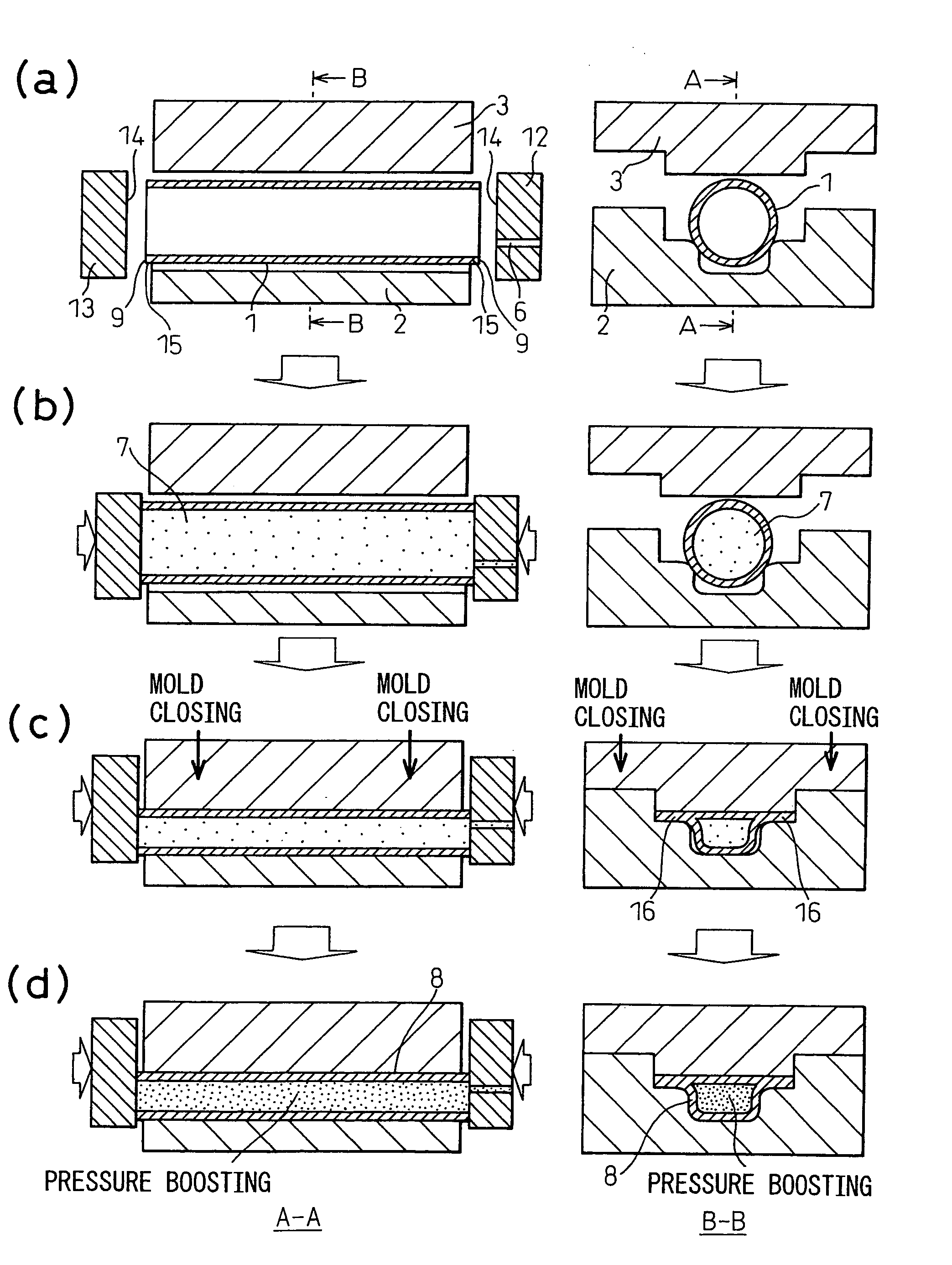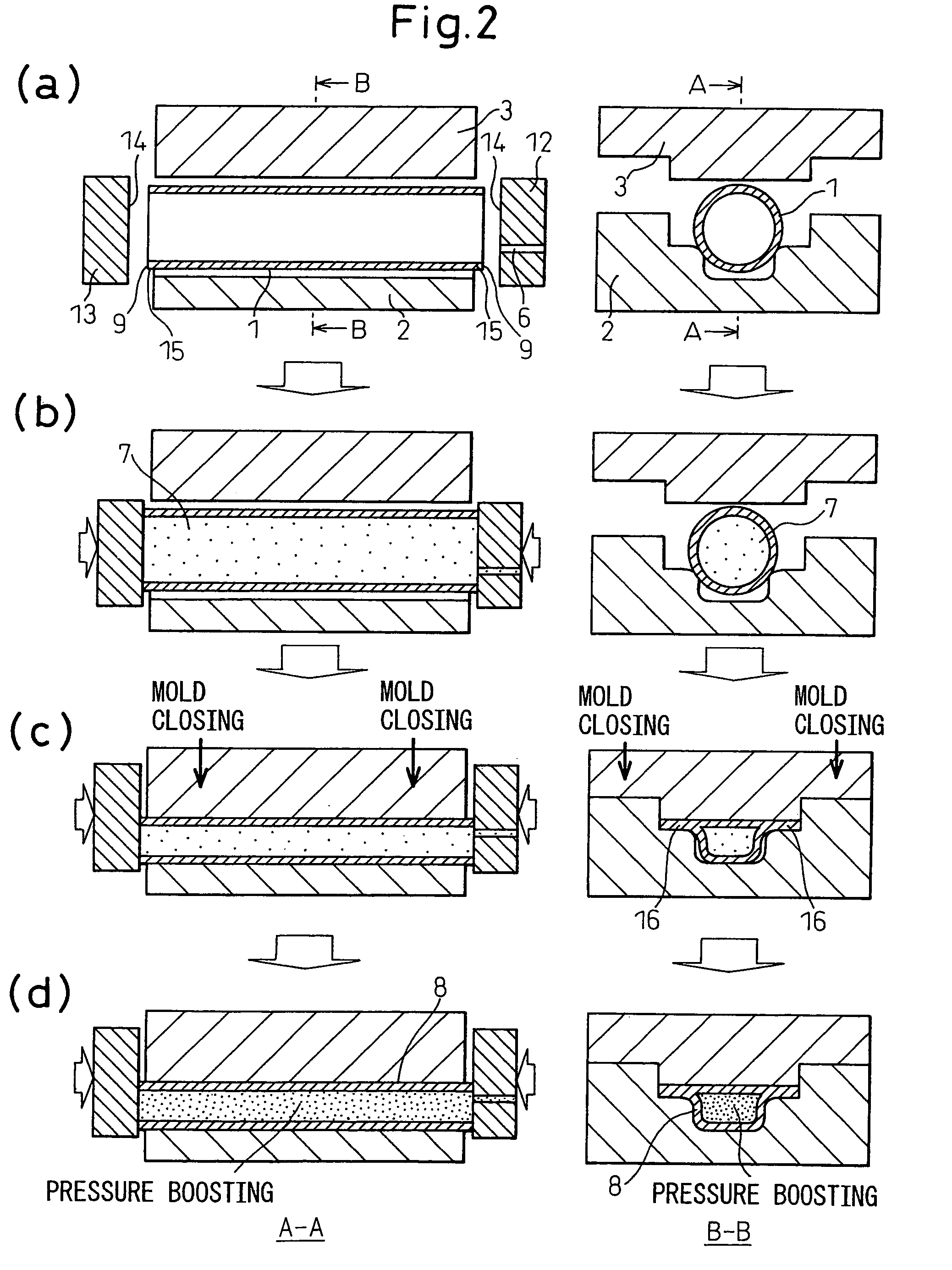Method for hydroforming and hydroformed product
a technology of hydroforming and product, applied in the field of hydroforming and hydroforming products, can solve the problems of plurality of hydroforming steps or separate punches able to move in the mold, and the difficulty of applying to complicated cross-sections, etc., to achieve the effect of raising the yield of the hydroforming produ
- Summary
- Abstract
- Description
- Claims
- Application Information
AI Technical Summary
Benefits of technology
Problems solved by technology
Method used
Image
Examples
example 1
[0077]For the tube material, a steel tube having an outside diameter of 60.5 mm, a wall thickness of 2.5 mm, and a total length of 370 mm was used. For the steel type, STKM13B of a steel tube made of carbon steel for machine structures was employed. The hydroforming mold had a cross-sectional shape across the entire length as shown in FIG. 7, a length of 360 mm, and a straight shape. Accordingly, the seal length Ls in this case was 5 mm (=(370−360) / 2) or two times the plate thickness of 2.5 mm. Further, the front ends of the seal punches were made 120×120 mm flat square shapes. For the material, SKD61 was employed. The surface hardness was made a Rockwell hardness of HRC54 to 57. The surface roughness of the front ends was made about Ra 1.6. The above tube materials and molds were used for hydroforming.
[0078]As the hydroforming conditions, the internal pressure P1 at the time of closing the mold was made 10 MPa and the pressing force F1 was made 100,000 N. Due to the size of the ste...
example 2
[0088]FIG. 8 shows a lower mold 17 for forming a flange in the case of a bent shape. Note that the cross-sectional shape of the groove of the mold cavity is the same as in FIG. 5 and has a flange part at the two sides along the entire length. The radius of curvature is 2.07×10−1 (=1 / 484) (1 / mm) along the entire length in the longitudinal direction. For the tube material, a STKM13B steel tube of an outside diameter of 60.5 mm, a wall thickness of 2.5 mm, and a total length of 370 mm the same as Example 1 was used.
[0089]First, the center of the tube material was bent by ram bending to a radius of curvature of 484 mm (=8 times the outside diameter of the tube material). This bent tube was placed to the groove of the lower mold 17 of FIG. 8. The distance between the mold ends in the middle of the groove was 360 mm, so if placing a 370 mm length tube material, it will stick out from the mold ends by 5 mm each. Accordingly, a seal length LS of Example 2 of 2 times the plate thickness of 2...
PUM
 Login to View More
Login to View More Abstract
Description
Claims
Application Information
 Login to View More
Login to View More - R&D
- Intellectual Property
- Life Sciences
- Materials
- Tech Scout
- Unparalleled Data Quality
- Higher Quality Content
- 60% Fewer Hallucinations
Browse by: Latest US Patents, China's latest patents, Technical Efficacy Thesaurus, Application Domain, Technology Topic, Popular Technical Reports.
© 2025 PatSnap. All rights reserved.Legal|Privacy policy|Modern Slavery Act Transparency Statement|Sitemap|About US| Contact US: help@patsnap.com



